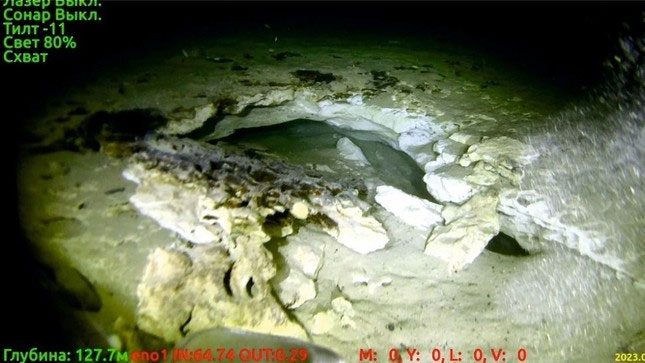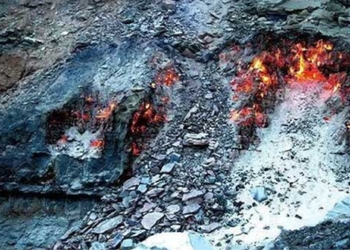A video camera mounted on an autonomous underwater robot has captured images of cracks related to a volcano near an active fault line beneath Lake Baikal in Siberia.
An underwater robot deployed at the bottom of Lake Baikal has documented cracks and deformations caused by previously unknown mud volcano activity. The robot discovered fissures left by mud eruptions at depths ranging from 100 to 165 meters at two locations – Malaya Kosa Bay and Goryachinskaya Bay – along the northwestern shore of the lake.

Debris from a mud volcano captured at a depth of 130m in Goryachinskaya Bay of Lake Baikal. (Photo: Lunina et al.)
While scientists have long known that Lake Baikal contains mud volcanoes, the latest discovery is located near a fault zone known as Severobaikalsk, or the North Baikal Fault, which runs along the lake. Signs of recent eruptions at the lake’s bottom may indicate that this fault line is active.
Mud volcanoes are surface expressions of deeper geological processes and are formed by mud and gas erupting from below. According to Oksana Lunina, a structural geologist and lead researcher at the Earth’s Crust Institute at the Siberian branch of the Russian Academy of Sciences (SBRAS), the craters along the northwestern shore of Lake Baikal mark cracks that run parallel to the Severobaikalsk fault, indicating that this fault line still exists.
Geologist Lunina stated: “In the North Baikal depression, which is bordered by this fault, strong earthquakes have occurred in the past.”
The two sites where researchers deployed the robot, or autonomous underwater vehicles (AUV), showed heavily cracked rock layers covered by clay, soft sediments, and eruptive deposits.
According to a study published in October 2023 in the journal Doklady, at the extreme northern location of Goryachinskaya Bay, where the footage was captured, craters about 130 meters deep are filled with a “mud mass,” indicating that a recent eruption has taken place.
|
Nestled in the wilds of Siberia is the vast Lake Baikal, shaped like a giant crescent. It is the deepest freshwater lake in the world. The lake’s bottom reaches depths of up to 1,642 meters. It also holds the largest freshwater reserves globally, accounting for about 20% of the world’s freshwater supply. This volume of water is estimated to be sufficient for humanity’s needs for 40 years. |





















































